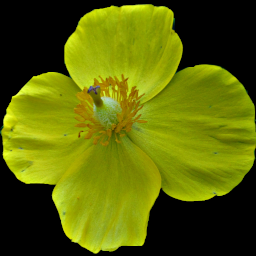Big bushes with large, leathery evergreen leaves and ball-like clusters of white flowers, these ancestors of garden Rhododendrons are unmistakable. The only thing that resembles them at all is the Mountain Laurel, whose leaves and flowers are much smaller.
The flowers are white, often blushed with pink, especially when they are young. The upper petal is marked with greenish-yellow spots.
Rhododendron can grow in deep shade, although it seems to bloom more prolifically in the sun. These were growing in the woods along the Trillium Trail in Fox Chapel, where they were blooming in the middle of July.
Gray describes the genus and the species, which he places in the Eurhododendron or Rhododendron-proper section of the genus.
RHODODÉNDRON L. Calyx mostly small or minute. Stamens sometimes as few as the corolla-lobes, more commonly twice as many, usually declined; anther-cells opening by a round terminal pore. Capsule 5-celled, 5-valved, many-seeded. Seeds scale-like.— Shrubs or small trees, of diverse habit and character, with chiefly alternate entire leaves, and large and showy flowers in umbeled clusters from terminal buds. (Rhododendron, rose-tree; the ancient name.)
EURHODODÉNDRON DC. Leaves coriaceous and persistent; stamens (commonly 10) and style rarely exserted, somewhat declined, or sometimes equally spreading.
R. máximum L. (GREAT LAUREL.) Shrub or tree, 2-10 m. high; leaves 0.8-2 dm. long, very thick, elliptical-oblong, or lance-oblong, acute, narrowed toward the base, very smooth, with somewhat revolute margins; pedicels viscid, corolla bell-shaped, 3.5-5 cm. broad, pale rose-color or nearly white, greenish in the throat on the upper side, and spotted with yellow or reddish. — Damp deep woods, rare from N. S., Me., and Que. to Ont. and O., but very common through the Alleghenies from N. Y. to Ga. June, July.






